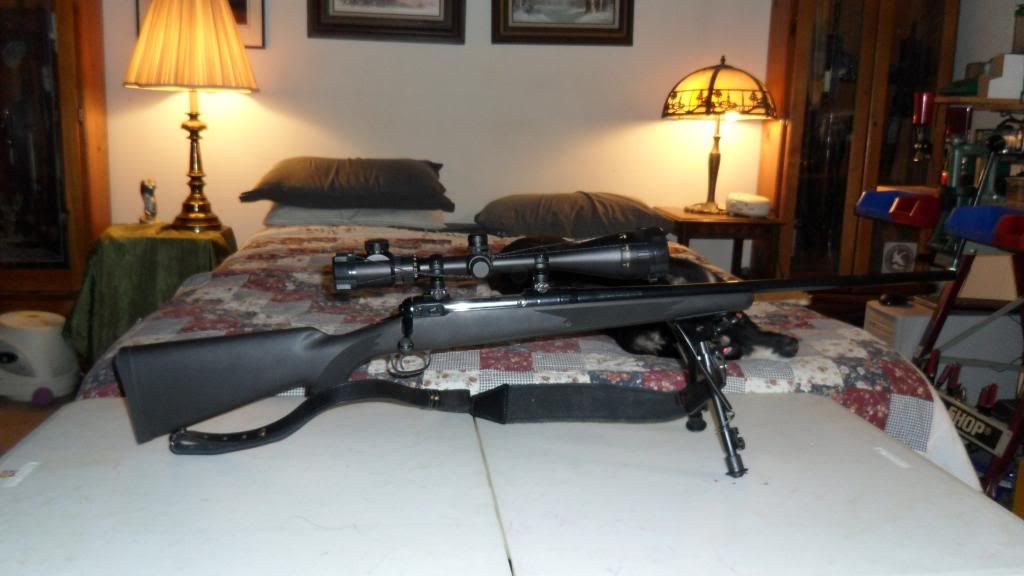There are differing viewpoints on
whether a bull barrel is inherently
easier to tune for accuracy than
a regular barrel. Here is my take
on the internal ballistics as your
bullet approaches the muzzle. At
this point the bullet is still accelerating but not as much as
when the bullet is say midway down
the bore. The mathematicians
understand this to be the time
derivative of acceleration da/dt.
As an interesting side note, the
human body can feel acceleration,
like when you jump out of an
airplane, but the body can not
detect its time derivative. In other
words the body cannot detect a
change in acceleration. So getting
back to the internal ballistics at the
point when the bullet begins to exit
the muzzle. So as you know the
barrel is somewhere in its whip
dynamic. Now suppose you have
skillfully fine tuned your load and
the tip of the bullet clears the crown
at zero amplitude... ok thats great.
Now here is what makes life interesting. Bullets have length so
what is happening when the tail
of the bullet clears the crown? Well
more than likely the muzzle is no
longer at zero amplitude. The
muzzle is undergoing a net acceleration in some direction
which is not longitudinal with the
static bore. It is as if the crown has slapped the bullet in the butt
right before the bullet is airborne.
Of course this degrades accuracy
to some degree. It is at this point
the bull barrel shines. The whipping
amplitude is impeded by the bull
barrel from is mere mass and stiffness. In other words, bull barrels dont whip around as much at the muzzle. Of course I am talking about two barrels which are the same in
all regards except the diameter. So if you are considering pushing the accuracy envelope, consider the bull barrel.
splatman
whether a bull barrel is inherently
easier to tune for accuracy than
a regular barrel. Here is my take
on the internal ballistics as your
bullet approaches the muzzle. At
this point the bullet is still accelerating but not as much as
when the bullet is say midway down
the bore. The mathematicians
understand this to be the time
derivative of acceleration da/dt.
As an interesting side note, the
human body can feel acceleration,
like when you jump out of an
airplane, but the body can not
detect its time derivative. In other
words the body cannot detect a
change in acceleration. So getting
back to the internal ballistics at the
point when the bullet begins to exit
the muzzle. So as you know the
barrel is somewhere in its whip
dynamic. Now suppose you have
skillfully fine tuned your load and
the tip of the bullet clears the crown
at zero amplitude... ok thats great.
Now here is what makes life interesting. Bullets have length so
what is happening when the tail
of the bullet clears the crown? Well
more than likely the muzzle is no
longer at zero amplitude. The
muzzle is undergoing a net acceleration in some direction
which is not longitudinal with the
static bore. It is as if the crown has slapped the bullet in the butt
right before the bullet is airborne.
Of course this degrades accuracy
to some degree. It is at this point
the bull barrel shines. The whipping
amplitude is impeded by the bull
barrel from is mere mass and stiffness. In other words, bull barrels dont whip around as much at the muzzle. Of course I am talking about two barrels which are the same in
all regards except the diameter. So if you are considering pushing the accuracy envelope, consider the bull barrel.
splatman


